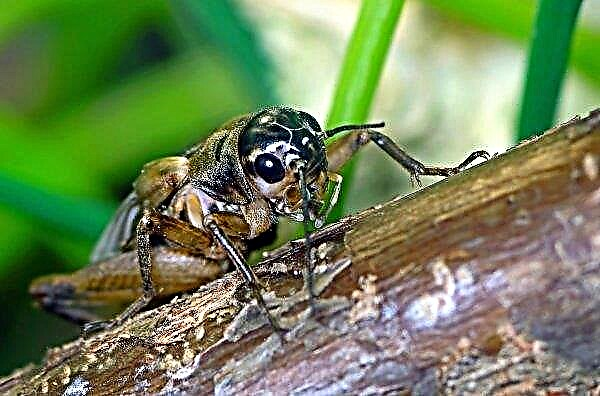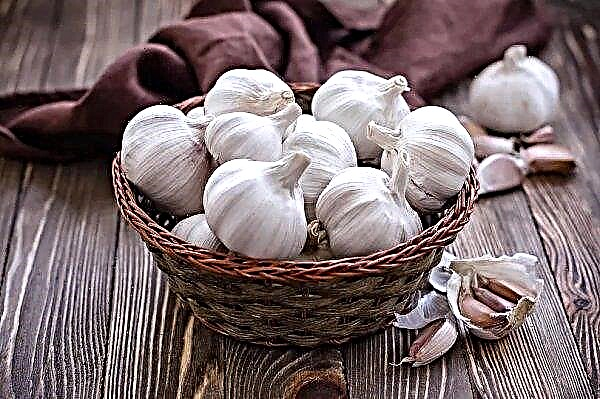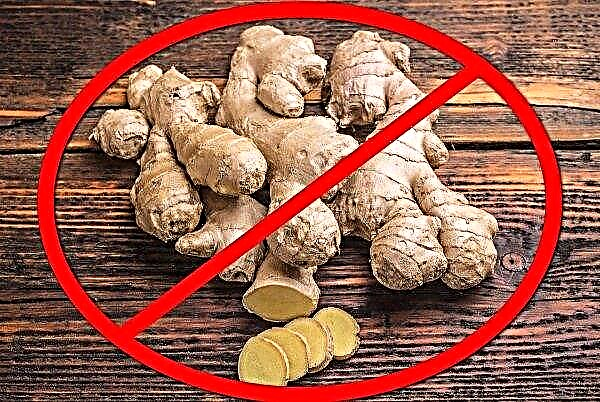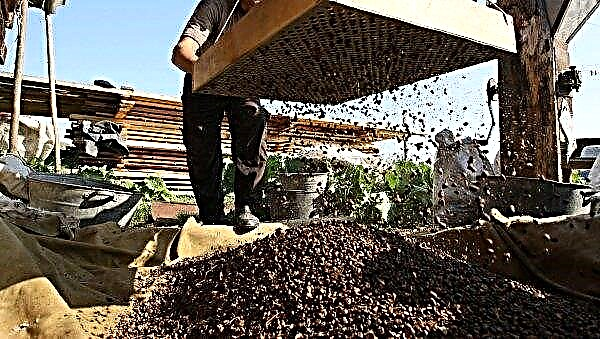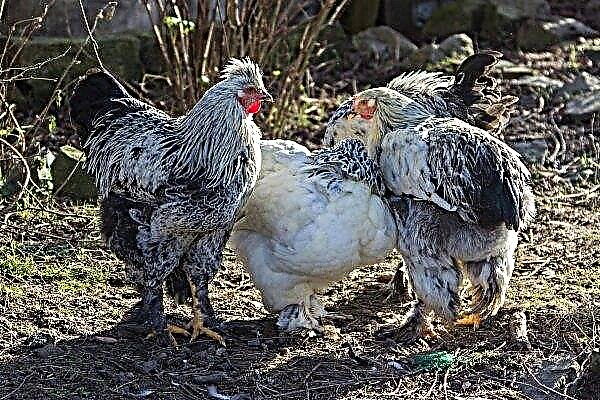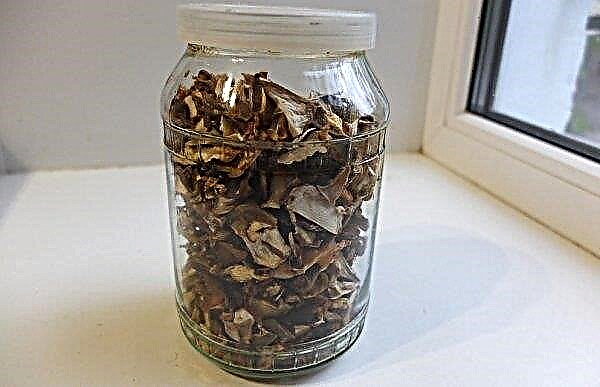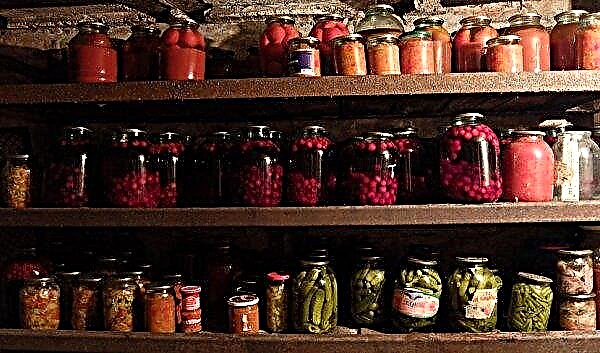Altai mountain sheep is a rare species of artiodactyl animals. It is particularly large in size and is the owner of the most massive horns. A detailed description and existing subspecies of these animals will be considered below.
What is the name of a mountain ram, description
The species in question is called argali, or argali. It includes several different subspecies, which differ in appearance.
This is the largest representative of the sheep genus. In addition to the massive body, heavy horns secrete it. In men who have reached puberty, the weight of the horns can vary within 35 kg.Did you know? The Altai mountain range occupies the territory of 4 countries at once - Mongolia, China, Kazakhstan and Russia.
External characteristics of argali:
- at the withers, mammals of this species reach 70–125 cm, depending on sex and age, the length of the body varies between 120–200 cm, and the tail is 14 cm;
- the body weight of an individual is 70–180 kg;
- the skull is large, massive, with a hunch-bearing profile, in females it is more aligned;
- the auricles are movable, framed at the tips by tassels;
- the tip of the muzzle is much lighter in color than the head and withers;
- the neck is shortened, powerful, well muscled;
- the chest is wide, with a girth of about 120-135 cm;
- the sheep’s body of all argali subspecies is squat, powerful;
- the limbs are thin, but very hardy;
- all species are characterized by twisting of horns with pronounced grooves and sharp ends in a spiral;
- due to the rather large weight of the horns, the head of these rams is thrown back, which gives them a proud look;
- the metacarpal and metatarsal bones of the limbs are elongated - this structure is characteristic only for representatives of this type of sheep and allows them to move freely along the rocks;
- in the front part of the hooves are 4.5 cm long, in the back part they are shorter by 2–4 mm;
- on the back surface of the limbs there are 2 additional hooves;
- the coloring is distinguished by a fairly wide range depending on the species, gender, age characteristics.
Habitat, number of individuals
The animals under consideration are quite few. They are found only in mountainous areas:
- border of China and Mongolia;
- Saylyugem ridge, located in the Altai mountains on the border with Mongolia;
- Mount Chulyshman;
- Tibetan Highlands, Himalayas, India;
- west of the mountain ranges of Kazakhstan, some mountainous territories of Uzbekistan;
- mountainous territories of Tajikistan, Kyrgyzstan, Afghanistan.
The natural habitat for these animals is mountainous terrain and rocks located at an altitude of several thousand kilometers. Mammals avoid terrain with dense woody vegetation. All territories in which these artiodactyls are found are under strict supervision, since the number of these animals is small. The average indicator of their numbers on the Russian-Mongolian border for 2016 is about 3899 individuals.Important! The habitat zone of mountain sheep is directly dependent on the subspecies to which they belong. In addition, all varieties of these animals are characterized by seasonal vertical movement: rams climb higher along the slopes, changing their location in the warm season, and descend into gorges and plains in the cold season.
 At the moment, the main population of argali is concentrated on the Saylyugem ridge.
At the moment, the main population of argali is concentrated on the Saylyugem ridge.Subspecies, differences in external characteristics
The modern classification distinguishes several varieties of the animals in question, which have been studied quite well. Between themselves, they are mainly distinguished by their coat color, structure of horns and dimensions. The main subspecies of the Altai mountain sheep:
- Altai ram, or Ovis ammon ammon - differs in the largest dimensions. The coat color is gray-brown; in winter it changes to a lighter shade.
- Anatolian mouflon, or Ovis ammon anatolica - individuals of medium size: their height at the withers does not exceed 70–95 cm. The horns are relatively outsized, up to 70 cm long, bent by a ring. The coat color is reddish buffy, with narrow dirty white saddle spots.
- Bukhara sheep, or Ovis ammon bocharensis - in external characteristics similar to Ovis ammon ammon. Included in the Red Book of the Russian Federation.
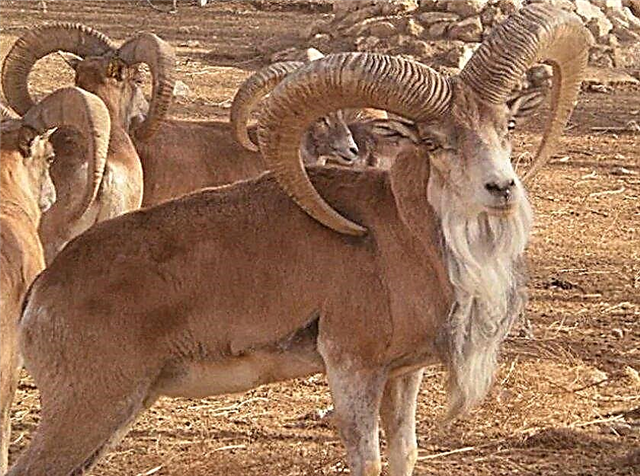
- Kazakh Argali, or Ovis ammon collium - The color of animal hair is sandy with a gray tint. Horns 120 cm long, twisted in a ring.
- Gansu argali, or Ovis ammon dalailame - large enough, weight about 90-100 kg. The height at the withers is approximately 115 cm, the color is chestnut brown on the back, grayish brown on the sides and white on the lower body, the inside of the legs, face, neck. Distributed in China.
- Tibetan ram mountain, or Ovis ammon hodgsonii - the coat of these representatives is gray-brown. Horns are localized almost parallel to the skull, spirally twisted.
- North Chinese mountain sheep, or Ovis ammon jubata - the coat color is gray, with small areas of interspersed with a brownish tint. The horns are twisted in a ring, not very long.

- Tien Shan mountain sheep, or Ovis ammon karelini - coat color is dark brown, on the breast is gray-black, with saddle-shaped white spots on the sides. The horns are massive, thickened at the beginning, tapering to the end.
- Karatau mountain sheep, or Ovis ammon nigrimontana - coat color is ocher red. Horns are spiral-shaped, about 100 cm long.
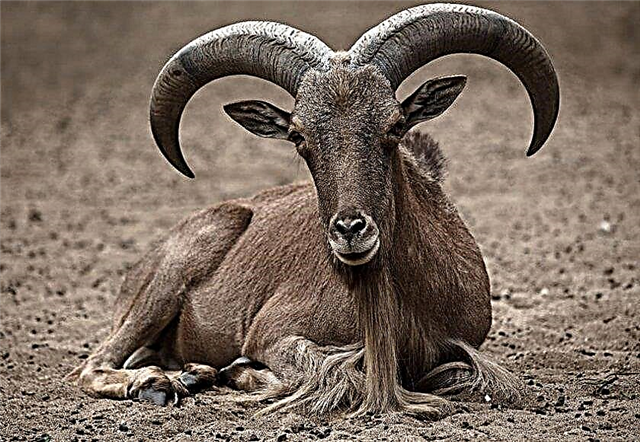
- Cypriot ram, or Ovis ammon ophion - the coat is thick, dull brown, with a bright light gray spot at the withers. One of the small-sized representatives: its height at the withers reaches 65–70 cm.
- Mountain sheep Marco Polo, or Ovis ammon polii - a massive animal at the withers reaching 120 cm. The color can be dark gray or red-ocher. The horns are powerful, twisted into a spiral.
- Kyzylkum mountain sheep, or Ovis ammon severtzovi - To date, the subspecies number is about 100 animals, so it is considered almost extinct. It differs in less massive horns, in comparison with other representatives of argali. They have a homonymous shape, with sharp anteroposterior and orbital edges. The coat color is brownish-gray.
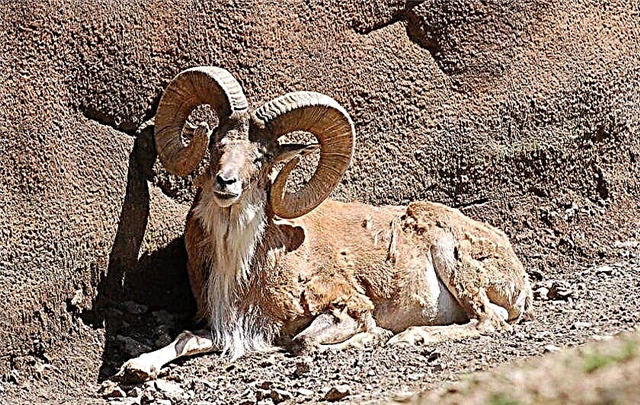
- Urmian mouflon, or Ovis ammon urmiana - coat color is reddish yellow or brownish brown. The animals themselves are medium-sized, up to 95 cm at the withers.
Lifestyle, duration
Arkhars are herd animals. Herds are divided by sex and age into 2 types:
- females with young animals;
- males.
Such groups are usually kept separate and join only during the mating period. The relationship between males and females is characterized by polygamy.
Usually argali choose for themselves one place of residence. However, in search of more fertile pastures during the warm season, they regularly migrate. During this period, they are knocked down by herds of 10 goals. Closer to winter, artiodactyls begin to descend to the foot of the mountain ranges, where herds can form up to 1000 animals. The largest, massive males can keep apart.Did you know? The International Red Book was published in 1963. To print it, scientists spent 15 years on the study of flora and fauna.

The life expectancy of the Altai sheep is 12-18 years. This indicator is directly affected by diet, place of residence and natural selection, as animals can be attacked by predators, and a large number of males die during the mating season during fights.
Behavior features
Excluding the mating period, animals do not show aggression against each other. Herds of females with young and male sexually mature individuals are kept at a distance from each other, however, when a danger arises, animals warn each other about this through sound signals.
Arkhars are distinguished by a high level of quick wit, which allows them to quickly find a way out of a dangerous situation.
Natural enemies
For argali, the main danger is:
- golden eagles;
- eagles;
- cougars;
- Snow leopards;
- Wolves
- coyotes;
- cheetahs;
- leopards;
- person.

Birds of prey pose a danger mainly to newborn cubs. Large animals attack both young animals and sexually mature individuals. To cope with adult argali is quite difficult, so most predators seek to knock them down to tumble into the abyss, and only then eat a wounded or already dead animal.
Diet
The species of fauna under consideration belongs to herbivorous mammals. The basis of their diet is various grassy vegetation. Animals have a special love for cereals, but if they are not there, they can be content with sedge, hodgepodge and other herbs that grow in mountainous terrain.
One of the features of these animals is their ability to do without water for a long time. It is quite enough moisture that comes with pasture.
Did you know? In case of urgent need argali can even drink salt water.
Breeding and offspring
The mating season begins in the first decade of November and continues in the winter. At this time, males compete for females, conducting fierce battles, which often lead to the death of one of the participants. The winning male mates with the female he likes.
At this time, males compete for females, conducting fierce battles, which often lead to the death of one of the participants. The winning male mates with the female he likes.
The duration of pregnancy in female argali is 5 months. The main percentage of young animals is born in May: during this period, juicy greens are already enough for nutrition and rapid growth of animals. Before the very birth, females are separated from the herd and kept apart. Cubs immediately after birth stand on their feet and are able to follow their mothers.
Compared to other species of artiodactyls, the female argali feeds its offspring more intensively. By autumn, young lambs in size reach 2/3 of the size of an adult, which allows kids to tolerate harsh winters normally. Puberty in females begins at the age of 2 years, in males - an average of 5 years.
Puberty in females begins at the age of 2 years, in males - an average of 5 years.Population Status and Species Protection
Monitoring the numbers of animals is very difficult, because their natural habitat is inaccessible terrain. The decline in the population is due not only to the activities of humans and predators, but also to climate change. Due to the extremely scanty number of these animals in the Red Book, they were introduced back in Soviet times, where they are to this day.
To preserve the species, attempts are made to breed in captivity. In addition, a number of laws have been passed prohibiting hunting for argali. Territories in which the appearance of these animals are noted are immediately listed as protected.Important! Argali breeds poorly in captivity - most attempts to breed them fail. To preserve their population, it is necessary as much as possible bring environmental conditions to natural.
 But these attempts have not yet yielded any results, because the illegal hunt for argali continues anyway - at least 2-3 cases of poaching are recorded per year.
But these attempts have not yet yielded any results, because the illegal hunt for argali continues anyway - at least 2-3 cases of poaching are recorded per year.Interesting Facts
Some interesting information about Altai sheep:
- The Latin name for the species of the ram population in question, ammon, is given to animals in honor of the deity Amon. According to legend, in fear of Typhon, all deities turned into different animals, so that he would not recognize them. Amon chose the ram. In antiquity, he was even depicted as a man with horns.
- The argali horns have been hunted since ancient times. Since antiquity, they have been used by people working in esoteric directions, as well as traditional healers - as raw materials for the preparation of various potions and medicines.
- Altai sheep move along steep surfaces rather poorly, but can jump from a hill to a hill or jump 3-5 meters in height with a fairly large weight.






